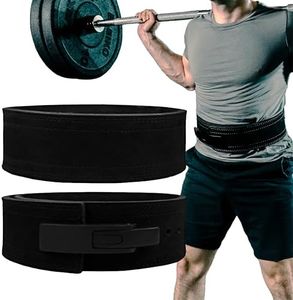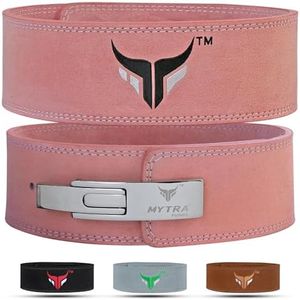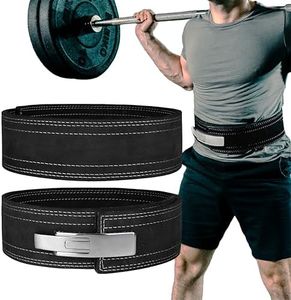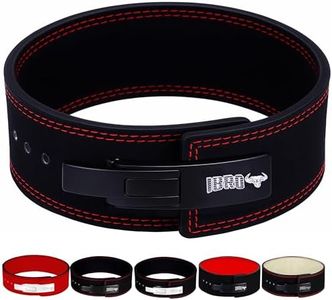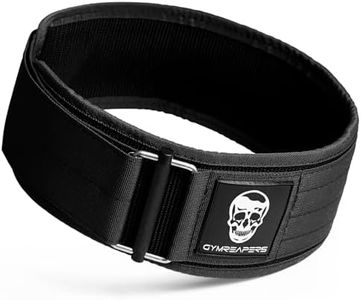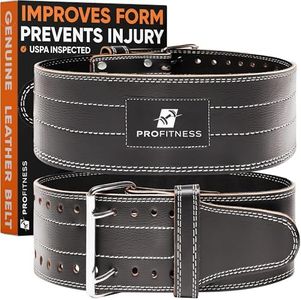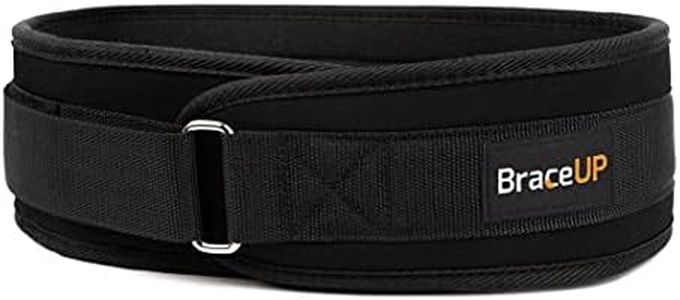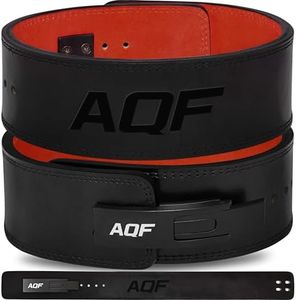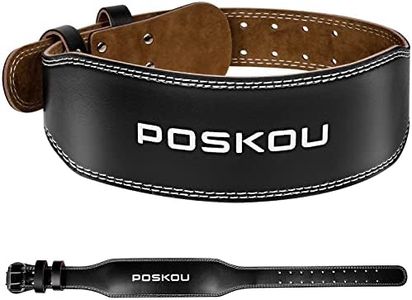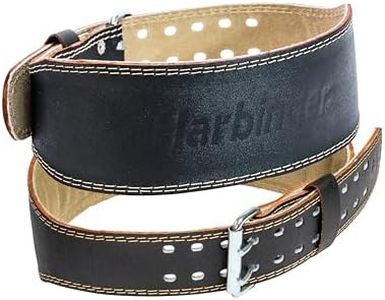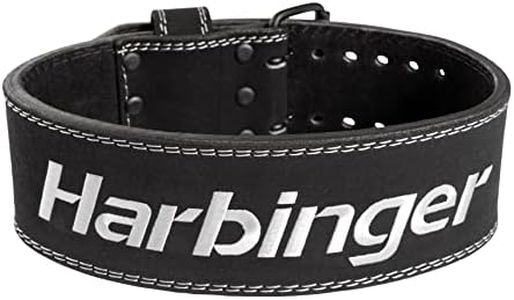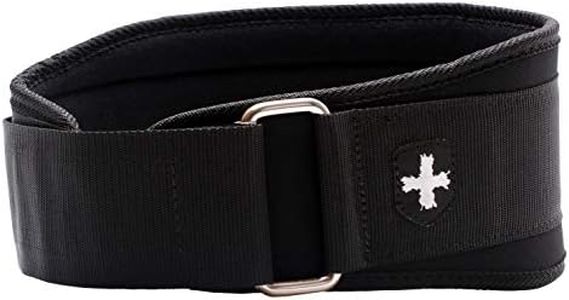We Use CookiesWe use cookies to enhance the security, performance,
functionality and for analytical and promotional activities. By continuing to browse this site you
are agreeing to our privacy policy
10 Best Lifting Belt For Men
From leading brands and best sellers available on the web.Buying Guide for the Best Lifting Belt For Men
A lifting belt is a supportive accessory used during weightlifting exercises to help stabilize your core and protect your lower back. Choosing the right lifting belt can make a significant difference in comfort, support, and effectiveness while working out. The best belt for you will depend on your specific needs, body type, and the type of lifting you do. Before buying, think about what exercises you want to use the belt for, how often you’ll wear it, and what level of support feels best for your body.MaterialThe material of a lifting belt determines its support, durability, and comfort. Common materials include leather, nylon, and sometimes suede. Leather belts are typically sturdier and less flexible, providing strong core support and lasting a long time, which is ideal for heavy lifters. Nylon belts are lighter, more flexible, and often more comfortable, making them a good choice for varied workouts or for people who prefer less rigidity. If you focus on powerlifting or heavy squats and deadlifts, a leather belt offers maximum support, but for CrossFit or general gym use, a nylon belt may be more suitable.
WidthWidth refers to how tall the belt is from top to bottom. Most lifting belts fall between 4 to 6 inches in width. A 4-inch wide belt provides a balanced amount of support and is suitable for most gym-goers, whereas a 6-inch belt may offer extra support but can feel bulky, especially for shorter torsos. Larger widths are generally favored by powerlifters focusing on lower back and abdominal stability. To pick the right width, consider your body size and the lifts you perform. If you have a shorter torso or want a more comfortable or versatile fit, opt for narrower belts; for maximum support during heavy lifts, go for something wider.
ThicknessThickness, usually measured in millimeters, affects how rigid and supportive the belt feels. Typical thicknesses are between 7mm to 13mm. Thicker belts (10mm to 13mm) give more rigidity and are suited for maximum effort lifts, such as competitive powerlifting. Thinner belts (7mm or 9mm) are lighter and less stiff, making them suitable for general fitness and Olympic weightlifting, where mobility is needed. When choosing, think about your comfort level and the type of lifts you do — thicker for maximum support, thinner for comfort and movement.
Closure TypeThe closure type refers to how the belt fastens around your waist. The most common types are prong, lever, and Velcro. Prong closures (single or double) are traditional and provide an adjustable, secure fit but can take longer to put on or remove. Lever closures allow for quick tightening and loosening but usually need tools to adjust the size. Velcro closures are easiest to adjust and fastest to secure but can wear out faster and may not offer as much security under heavy loads. Choose based on how often you want to adjust the belt and whether speed or stability is more important for your workouts.
ContourSome belts are straight (same width all around), while others are contoured (tapered in the front and wider at the back). Straight belts provide equal support for both the abdomen and back, which is preferred for powerlifting moves. Contoured belts offer more comfort and movement around the front, making them popular for Olympic lifting or general training. If you prioritize rigid support for heavy lifts, a straight belt is best; for comfort and mobility, a contoured design may be more enjoyable.
